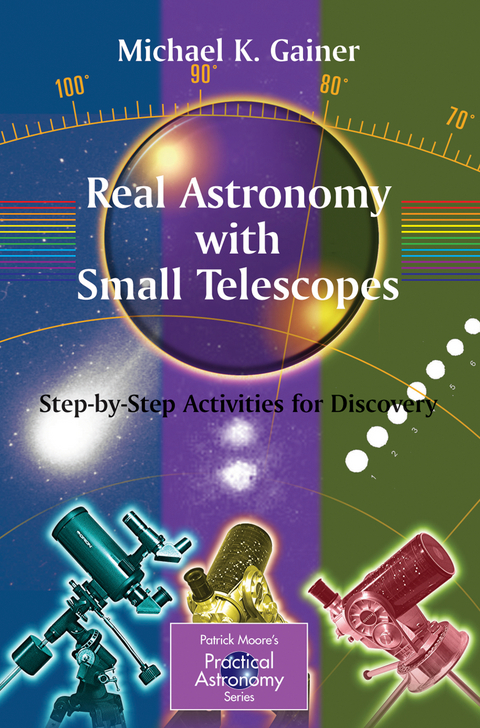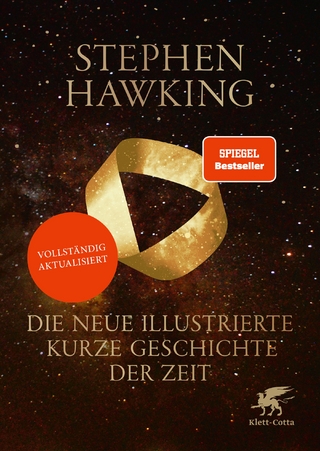
Real Astronomy with Small Telescopes
Step-by-Step Activities for Discovery
Seiten
2006
|
2007 ed.
Springer London Ltd (Verlag)
978-1-84628-478-6 (ISBN)
Springer London Ltd (Verlag)
978-1-84628-478-6 (ISBN)
Thesmallrefractingtelescopewithitssimpledirectdesignandconstructionand permanently aligned optics is the time tested standard for personal use. Easily portable, it can be taken out of the house and set up at a moment’s notice. Or, it can be packed conveniently into a small car for traveling to a dark observing site. With moderate care and minimal maintenance, the telescope and mount canlastforgenerations. These instruments provide sharp, crisp high-contrast images of the Moon and planets. They are less susceptible to the effects of unstable air than larger ones, and because of their low maintenance and durability they are ideal for the parent educator or lifelong learner. Until recently, however, the high cost ofsmalltelescopesofsufficientqualityforseriousastronomicalusehaslimited theiraccessibility. During the past decade, innovations in optical design and manufacture have loweredcostandimprovedquality.Currentdevelopmentsinlensdesignmakeit possibletoproduceaffordablerefractingtelescopeswithshortertubelengthsand greater versatility. The once very costly 90-mm Maksutov–Cassegrain, with its optimumcombinationofeffectiveopticsandportability,nowsellsforamodest price. I have often seen small instruments referred to as “grab and go” or “quick look,”notworthyofconsiderationforseriousobserving.Imaintaintheycanbe much more. Despite their limits in types of observation, 80-mm refractors and 90-mm Maksutovs have sufficient aperture and magnifying power to provide a lifetimeofobservingpleasure.Theyareidealforlunaroccultationmeasurements, tracking the solar activity cycle, observing variable stars and measuring binary ix x Preface stars. Although all the activities described here are equally applicable to larger instruments,noneofthemrequireanaperturelargerthan80mm.Through the use of common digital cameras, the limiting stellar magnitude andimagescaleofsmalltelescopescanbeincreaseddramatically,thusproviding resultsonenormallyexpectsfromlargerinstruments.Muchofthisbookapplies thatprincipletomakinginterestingandusefulastronomicalobservations.Ihave takennovelapproachestoextendingtheuseofsmallinstrumentsforquantitative observations by applying unique methods for the analysis of digital camera photographs.
The Celestial Sphere.- The Measurement of Time.- The Equatorial Telescope Mount.- Telescope Considerations.- Astronomical Photography.- The Sun.- The Moon.- The Planets.- Comets and Asteroids.- Visual Binary Stars.- A Binary Star True Orbit Projector.- Visual Observations of Variable Stars.- Photography of Variable Stars.- Star Clusters and Nebulae.- A Color–Magnitude Diagram for The Pleiades.- The Design of an Objective Prism Spectrograph.- The Proper Motion of Barnard’s Star.
| Erscheint lt. Verlag | 12.12.2006 |
|---|---|
| Reihe/Serie | The Patrick Moore Practical Astronomy Series |
| Zusatzinfo | 90 Illustrations, black and white; XVI, 148 p. 90 illus. |
| Verlagsort | England |
| Sprache | englisch |
| Maße | 155 x 235 mm |
| Themenwelt | Sachbuch/Ratgeber ► Natur / Technik ► Weltraum / Astronomie |
| Naturwissenschaften ► Physik / Astronomie ► Astronomie / Astrophysik | |
| ISBN-10 | 1-84628-478-3 / 1846284783 |
| ISBN-13 | 978-1-84628-478-6 / 9781846284786 |
| Zustand | Neuware |
| Informationen gemäß Produktsicherheitsverordnung (GPSR) | |
| Haben Sie eine Frage zum Produkt? |
Mehr entdecken
aus dem Bereich
aus dem Bereich
die Suche nach der Urkraft des Universums
Buch | Hardcover (2023)
Klett-Cotta (Verlag)
25,00 €
Buch | Hardcover (2023)
Klett-Cotta (Verlag)
32,00 €


